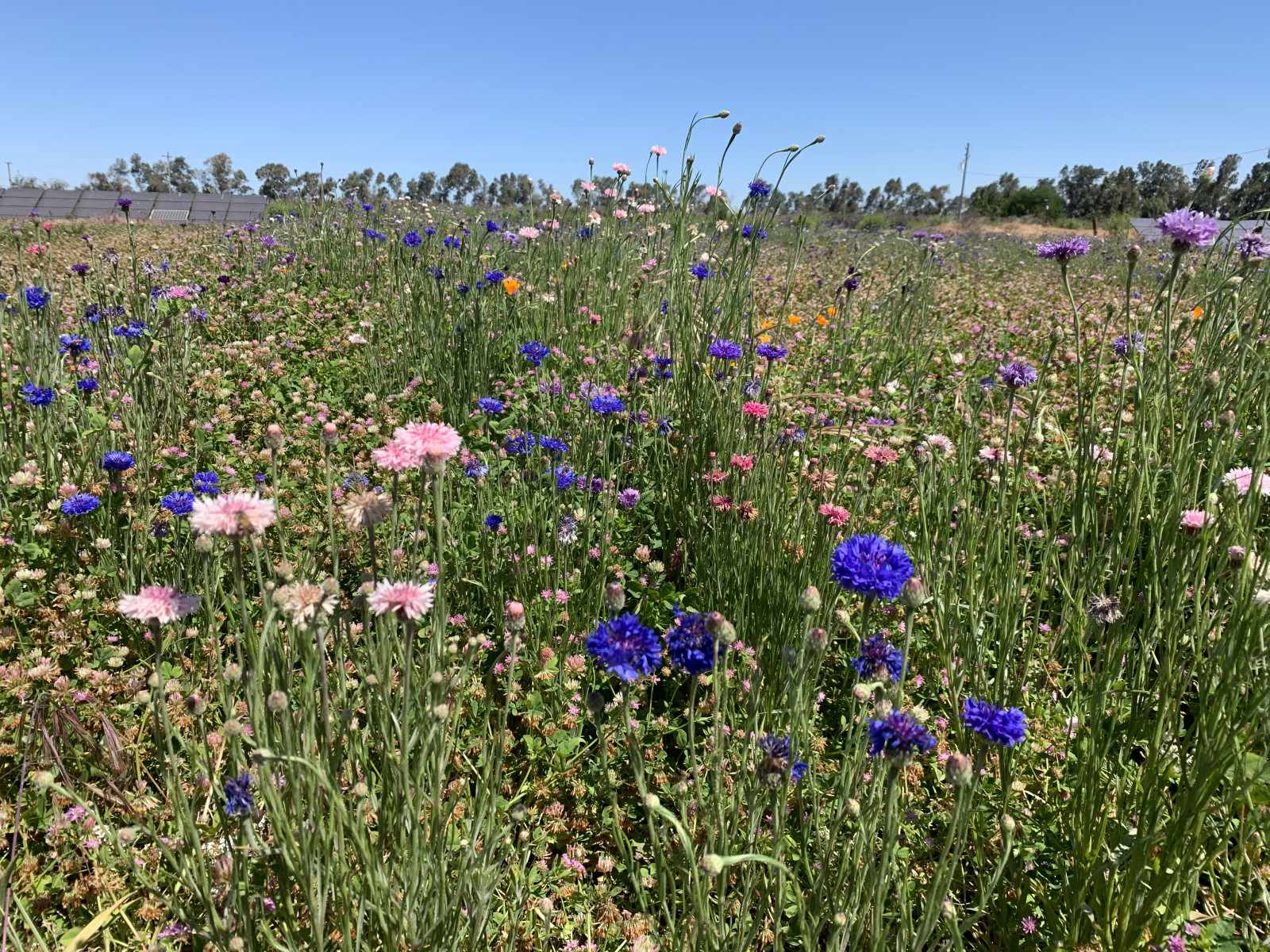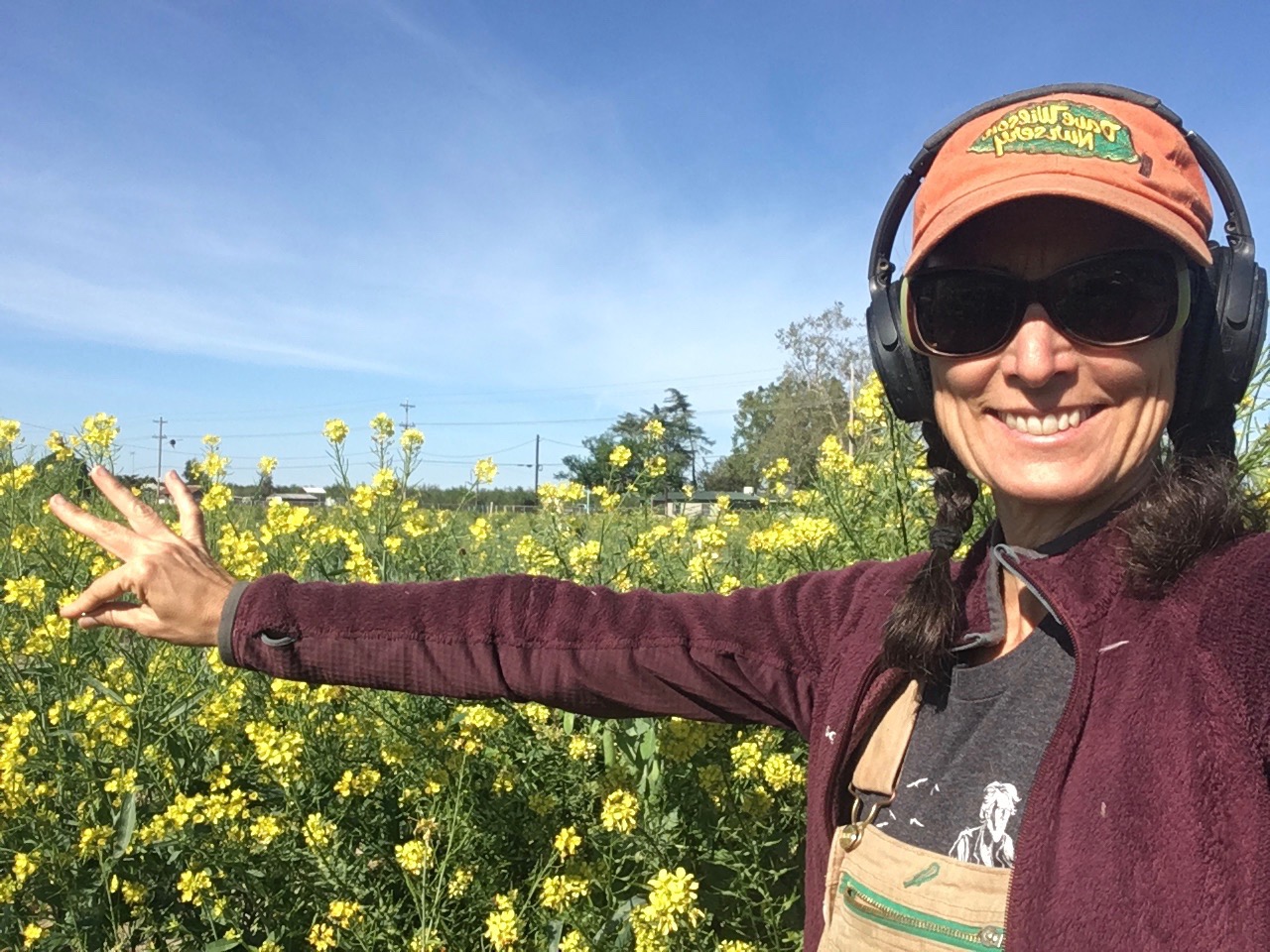
As we launch another year of the MJV California Working Lands Free Seed Program, we’re celebrating the people and communities that make it a success. Pollinator-friendly habitat on working lands -- whether a large-scale ranching operation or a one-acre urban farm -- contribute to thriving pollinator ecosystems, national monarch conservation targets, and bring additional environmental benefits to the land. Working land managers are making a difference for monarchs and pollinators in California, and we’re proud to support them by providing free wildflower seed mix, native milkweed plugs, and technical assistance.

The Free Seed Program, which started as a collaboration with Project Apis m.’s Seeds for Bees program, is still accepting interest forms for the 2022 season. Learn more and apply here. You also can read more of the program’s habitat success stories on the MJV blog: Supporting Pollinators at Yisrael Family Urban Farm and The California Working Lands Free Seed Program: Reflections on a Season of Growth.
Today we’re featuring an interview with Christine Gemperle, a second-generation almond grower who, along with her brother Erich, farms 40 acres of almond trees near Turlock, California, and another 93 acres in nearby Gustine. Christine has been part of the Free Seed Program since its beginnig, and has been supporting pollinators on her farm long before she met us. In this interview, Christine shares her perspective on the suite of benefits pollinator-friendly habitat brings to agricultural lands, and also the way that partnerships and collaboration are a key to both productive farming and a healthy environment.
MJV: What inspired you to participate in MJV’s Free Seed Program?
CG: Before I participated with MJV I had spent about seven years working with cover crops for bees with the Project Apis m. Seeds for Bees program in our orchard. By the time MJV was brought to my attention I didn’t need to be convinced of the importance of pollinator habitat – I had seen the benefits with my own eyes. At the time Billy Synk of Project Apis m. introduced me to [MJV California Habitat Coordinator] Wynter Vaughan I was in the middle of an orchard redevelopment project and there was a small ¾-acre block between the backyard and the barn that just wasn’t worth planting because of the proximity to the house and the inconvenience of the size and location. We didn’t really know what we were going to do with it until Billy and Wynter informed me of the Free Seed Program. It was initially planted with clover but the following year we put in the wildflower seed and showy milkweed plugs. The flowers did great that year but outcompeted the milkweed so I had to change my strategy for the milkweed. The following fall I planted narrowleaf milkweed plugs up on a levy with dedicated drip irrigation and they flourished.

MJV: Would you share a little bit about what plants are growing in the pollinator habitat you planted with MJV milkweed/seed mix?
CG: I still have a lot of crimson and persian clover from the very first year we planted but now there are wildflowers interspersed. The different species bloom in waves. Right now I have five spot, African daisy, baby blue eyes, some California poppy, bachelor’s buttons (cornflower), calendula, lobelia, gum plant, primrose, goldfields, birds eyes, tidy tips and a fair amount of bee balm (phacelia) which is close to blooming. The milkweed is just starting to shoot out again. This is spread over several different areas. In addition to the ¾-acre block I have four perimeter orchard rows that are planted in wildflowers and the remainder of the entire orchard is planted in bee forage cover crops.
MJV: How do you see pollinators in the bigger picture of sustainable agriculture in your region?
CG: I have bees on my property every year from January to April for the almond bloom. We have had a two-generation relationship with my beekeeper’s family as my father and his father had a pollination contract for 20 years prior to ours. I recognize not just the importance of providing a healthy home for his bees as it benefits my trees but also the importance of building a relationship founded on mutual respect, trust, and support. It is in my best interest as well as his that his bees have the safest and most nutritional home while they are here, and leave healthy. Strong colonies pollinate large crops, thrive during the summer and come back the next year. The additional benefits are all the added native pollinators and beneficial insects that inhabit the managed ecosystem we have created here. They are the indicators of a healthy ecosystem that is in balance.

MJV: In addition to supporting healthy pollinator populations, how else does pollinator-friendly habitat benefit your farm?
CG: That is a question worthy of a master’s thesis or at least an hour-long PowerPoint presentation. How long do you want to hear me gush about the benefits? Over the last 10 years of cover cropping I have seen a gradual increase in the soil’s ability to hold water. The trees are far more resilient to heat and water stress as evaporative losses have likely decreased with the “living mulch” as I call it. When trees go without water during harvest they do not defoliate even though they are in sandy loam soil because the years of cover cropping and chipping prunings has added organic matter to the soil. I never have to worry about standing water or compaction issues. I have been able to cut our insecticide sprays because the beneficial insects take care of the mites that were once problematic. The cover crops outcompete many of the herbicide-resistant weeds that would otherwise have become established in the spring and later a problem to manage during the summer. My beekeeper really likes me…a lot! My property is truly a beautiful place to live and so many people come to visit and enjoy it throughout the spring. It smells really good when the clover blooms — it’s like living in a perfume factory.
MJV: You’re involved in numerous industry groups including being a director of the Almond Board of California. Can you share more about what drives your involvement?

CG: I strongly believe that collaborations and partnerships are the keys to success and are where real change takes place. When has isolationism ever solved any real problems or served anything other than self interest? Looking forward, I think our greatest hope for a future with a healthy environment AND productive agricultural system will require the two sides coming together to work towards a common goal. This belief drives my involvement in the Almond Board of California (ABC), Project Apis m. Board of Directors (PAm) and Women in Almonds. These organizations all facilitate and emphasize collaboration, mentorship, networking, and idea sharing. I have definitely seen in my time at the ABC that partnership is the way forward. I am proud to say we worked with the Pollinator Partnership and California Department of Food and Agriculture in the formation of the California Pollinator Coalition. This group brings together a broad array of grower organizations across the state’s agricultural and environmental landscape to help promote the health of wild and managed pollinators.
PAm, where the beekeeping and almond farming world intersect, has become the cornerstone of the cover crop movement in almond orchard systems and has been instrumental in increasing the number of acres in cover crops through their Seeds for Bees program. Contrary to the media’s portrayal, the beekeeping and almond farming relationship is actually more symbiotic than adversarial. Honestly, if we want to make a positive impact while we are here, whether it is slowing climate change or saving a species, working together, listening to each other and staying solution focused have got to factor into the process. Without that, we are lost.
Enjoy a visual journey to Christine's farm and learn more about her farming practices and care of the environment with this video made by the Almond Board of California.
Learn more about the MJV's Habitat Programs in California and the Midwest.
We would like to acknowledge Project Apis m. for launching this program under their Seeds for Bees initiative, and for their partnership with the MJV to help it succeed. The National Fish and Wildlife Foundation provides support for our California Habitat Coordinator to support growers, with matching support provided by the MJV, The Bee and Butterfly Habitat Fund and Keystone Policy Center. Funding for the More than Monarchs seed mix and plant materials is provided by Bayer.
